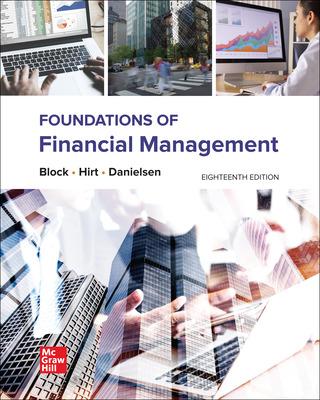Answered step by step
Verified Expert Solution
Question
1 Approved Answer
Portfolio theory. Consider a mean-variance investor who cannot borrow and lend at the same rate. Specifically, the investor can borrow at rate rb and lend
Portfolio theory. Consider a mean-variance investor who cannot borrow and lend at the same rate. Specifically, the investor can borrow at rate rb and lend at rate rl, with rb > rl.
(a) Suppose that there is a single stock with expected return E(r1) and standard deviation 1. Write the expected return of the portfolio i) when the investor invests less than his initial wealth in the stock, ii) when the investor invests more than his initial wealth in the stock. Denote the weight of the stock in the portfolio.
(b) In each case, write the expected return of the portfolio as a function of the standard deviation of the portfolio and represent the portfolio frontier in a graph.
(c) Suppose now that there are two stocks, stock 1 and stock 2, with expected returns E(r1) = 11% and E(r2) = 14%, and standard deviations 1 = 25% and 2 = 30%. The correlation between the stocks is 0.4. Assume that rb = 4% and rl = 2%. Derive the tangent portfolio, distinguishing the case where the investor lends from that where she borrows.
(d) Draw the portfolio frontier. Recall the two-fund separation theorem and explain whether it holds in this case.
(e)Give the definition of Capital Market Line (CML).
Step by Step Solution
There are 3 Steps involved in it
Step: 1

Get Instant Access to Expert-Tailored Solutions
See step-by-step solutions with expert insights and AI powered tools for academic success
Step: 2

Step: 3

Ace Your Homework with AI
Get the answers you need in no time with our AI-driven, step-by-step assistance
Get Started


